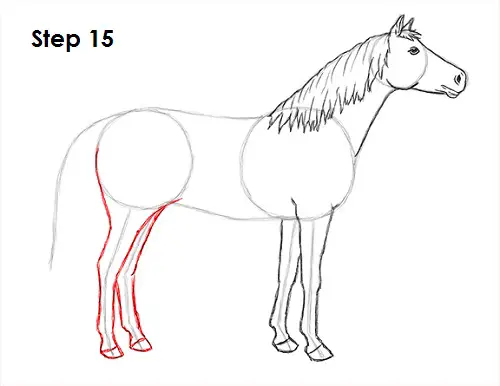
Step 15: Draw the hind legs the same basic way as the front, except these are thicker at the top. They also bend back more at the hock joint. Draw the horse's other leg the same way but only the portion that is visible.
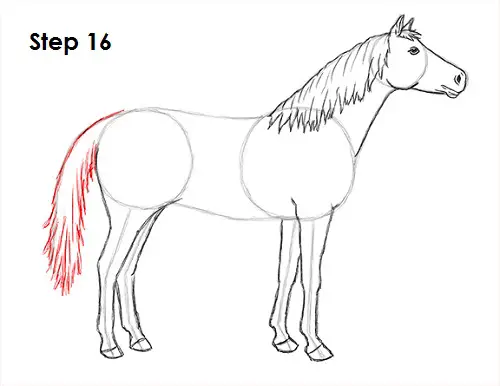
Step 16: Draw the horse's tail using quick, short strokes to simulate the flow of the hair. Just like with the mane, you can draw the horse's tail as long or as short as you want.
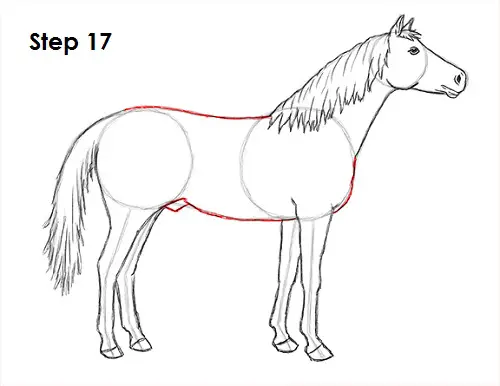
Step 17: Use the remaining lines as guides to draw the rest of the body.
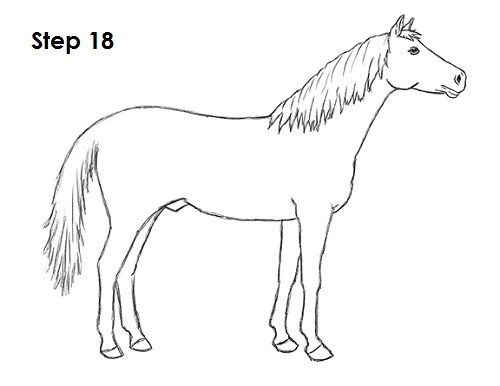
Step 18 (optional): For a cleaner look, erase as much as you can of the initial guide lines. Don't worry about erasing all the guide lines. It's okay to leave some behind.
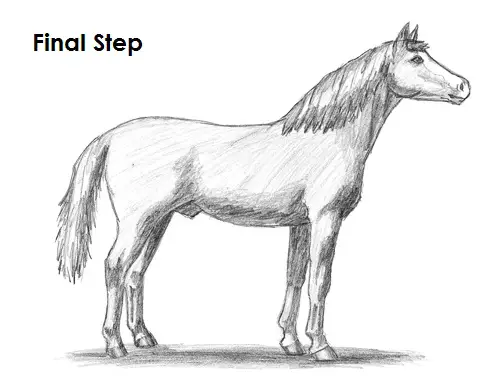
Final Step (optional): Add some shading to give your Arabian horse drawing more structure, dimension and volume. Vary the pressure on your pencil to get different degrees of tonal value. You can leave part of the horse's mane unshaded for a nice-looking sheen. Pick the direction of the light source when shading so that the shadows are consistent with it. Shading helps to give your horse drawing more skeletal and muscular structure. It's always a good idea to have reference available to get the horse's anatomy as accurate as possible.
You can add value throughout your horse drawing for extra detail. You can add a solid value like this or draw spots or patches, even stripes! Draw a horn over the head to make a unicorn! Or wings for a pegasus! Have fun with it! If your horse isn't flying, add a cast shadow underneath to ground it.
Thanks for visiting! Subscribe to the How2DrawAnimals YouTube Channel for a new tutorial every week.
To learn how to draw popular cartoon characters, visit EasyDrawingTutorials.com.
To learn how to draw Manga, visit How2DrawManga.com.
RELATED TUTORIALS
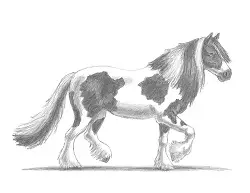 |
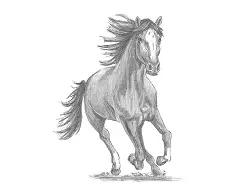 |
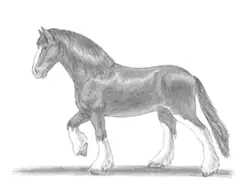 |







